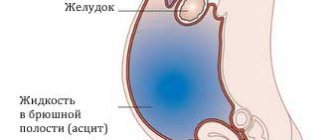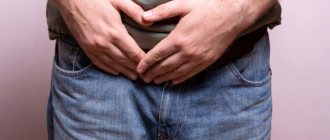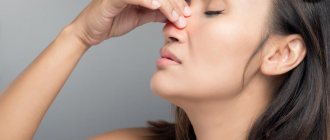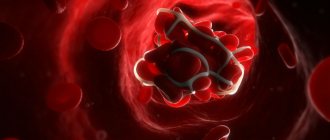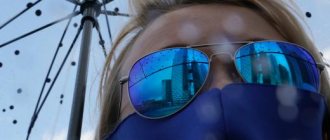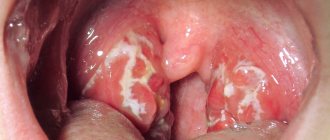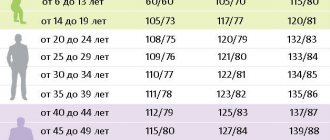The clinical manifestation of many pulmonary and cardiac diseases is shortness of breath. It is expressed in disorders of the depth and frequency of breathing, which leads to lack of air. Among the types of shortness of breath, bradypnea stands out, that is, rare, unchanged breathing or with a slight increase in depth.
It is important!
The most important function of the body was and remains breathing. After all, a person can only live for a few minutes without air. Inhalation brings oxygen into the bloodstream, exhalation removes carbon dioxide. Blood carries organogen valuable for life to all cells of the body.
The brain is the most demanding of oxygen: it dies 7-9 minutes after breathing stops. In such a situation, it is no longer possible to help a person.
What breathing rate is considered normal?
The respiratory movement is one movement of the chest and anterior abdominal wall, that is, inhalation and exhalation.
The frequency of respiratory movements is calculated for a certain unit of time, and the norm varies depending on the age, gender or condition of the person. Norm of respiratory movements per minute:
- in newborns - 40-60,
- 1 year - 30-35,
- from 2 to 5 years – 25-30,
- adolescence and older - 16-20.
Women breathe 2-4 times faster than men. And when a person sleeps, breathing slows down to 14-16 movements per minute. Physical activity or emotional excitement provokes increased breathing. But all this is the norm.
But if at rest the number of movements is more than 20 times per minute, this is already rapid breathing or tachypnea. If the number is less than 12 times per minute, we can talk about decreased breathing - bradypnea, and the absence of breathing is called apnea.
What are the consequences of a slow frequency?
In healthy people, the respiratory rate ranges from 12 to 20 per minute. If breathing is calm, then 1 excursion averages 500-530 cm3 of air.
Remember!
The frequency at which fewer than 11 respiratory cycles occur is considered slow. To determine bradypnea, it is necessary to determine the respiratory pause, or rather its duration, that is, the ratio of the duration of inhalation to the duration of exhalation. Normally, this value should not exceed the limit of 1.2 seconds, in extreme cases - 1.5 seconds. If the readings are higher, then there is a problem. With bradypnea, the patient's respiratory rate involuntarily decreases:
- This can occur with hypocapnia, which occurs with mountain sickness.
- The respiratory center is also depressed during prolonged hypoxia, when a person is in a rarefied atmosphere or due to heart failure, also with insufficient blood circulation, or with brain damage, for example, cerebral hemorrhage.
- The respiratory center does not work properly when acidic metabolic products accumulate in the bloodstream.
The clinical picture is expressed in dizziness, loss of coordination and weakness, confusion, even comatose level. The patient may become delirious and have hallucinations.
In addition to a decrease in respiratory movements, the acidity of the blood shifts, and because of this, all body systems function with disturbances.
True, there is also physiological bradypnea. It appears after training in professional athletes. It can be observed in healthy people during deep sleep.
Note!
In such situations, it is important that normal breathing is restored on its own, and quickly enough, for example, after light exercise or awakening.
Infrequent breathing without pathological changes in function will not cause problems with gas exchange, since the volume of pulmonary ventilation remains the same. However, bradypnea is the cause of the appearance of deeper negativity in the respiratory system.
Therefore, even with minor deviations, consult a doctor. If the differences from the norm are serious, call an ambulance. A patient with periodic and persistent bradypnea, in addition to the primary specialist, needs to visit a neurologist.
If the attack happened before your eyes, then before the ambulance arrives, sit the patient down or lay him down so that his head is on the pillow, calm him down, open the window. Remember, only a doctor will provide professional help!
What is difficulty breathing and what are its causes?
Difficulty breathing or dyspnea is rapid breathing, during which we use additional muscles in order to somehow inhale. With COVID-19, this condition occurs in only 30% of patients, and cough and fever still come first.
Difficulty breathing is not typical for common ARVIs. When you have a cold, the most common symptoms are nasal congestion, coughing, sneezing, and sore throat. Slight shortness of breath during ARVI may be present with a lingering dry cough.
Breathing disorders can be caused by:
- diseases of the respiratory system or cardiovascular system,
- anemia,
- psychogenic shortness of breath,
- damage to the respiratory center of the brain,
- metabolic disorders,
- pregnancy.
Beach ball test for women
Tatyana Shapovalenko suggested a variation of the balloon test to artist Natalya Bochkareva. If you yourself are unable to estimate the volume of your one exhalation, then try this method. Natalya was given a children's inflatable ball with a capacity of exactly 10 liters. And they asked him to inflate with full exhalations
.
The full exhalation of a healthy woman is 2.5 liters. This means that Natalya had to inflate it in just four exhalations. However, after two exhalations, she had to stop - the actress became dizzy, and she was able to inflate less than a third of the balloon. Are your results comparable to those of Natalia Bochkareva? This is another argument in favor of urgent smoking cessation. A smoker can call 8-800-200-0-200
(the call is free for residents of Russia), say that he needs help quitting smoking, and he will be switched to specialists at the Advisory Call Center for Help in Quitting Tobacco Consumption (CTC) . If all KTC specialists are busy at this moment, his phone number will be sent to KTC by e-mail, and they will call him back within 1-3 days. Psychologists and doctors provide counseling to those who contact the CTC. Psychologists help prepare for the day of quitting smoking, help find a replacement for smoking rituals, together with the client they will determine the optimal ways to overcome addiction, and support in difficult moments in the fight against nicotine addiction. Doctors will advise on the most effective therapeutic methods for quitting smoking, and give advice to patients with various diseases on how best to prepare for quitting smoking, taking into account existing health problems.
Tags:
- Smoking
- Give yourself life
- Diagnostics
- Shapovalenko
- Celebrities
- Lungs
- Testing
When is shortness of breath a reason to see a doctor?
In patients with bronchial asthma or chronic obstructive pulmonary disease, if shortness of breath and cough worsen, it is recommended to immediately seek help, since it is difficult to distinguish an exacerbation of the disease from COVID-19.
There are other conditions when you need to seek medical help:
- sudden acute shortness of breath at rest,
- intense pressing pain in the chest, accompanied by shortness of breath,
- shortness of breath with uneven rapid heartbeat,
- coughing up blood.
Inflate a balloon
Tatyana Shapovalenko proposed this test to Sergei Trofimov, better known as Trofim. Trofim is a heavy smoker with many years of experience, and the doctor had to convince the musician that smoking does not leave its mark on the body. Tatyana Shapovalenko asked Sergei to take a deep breath and try to inflate the balloon with one exhalation
. The resulting ball is the volume of his lungs. With a normal lung capacity of 3.5 liters, Trofim was able to pump only 2.4 liters of air into the balloon. This is very little - and it means that the lungs are no longer working at full capacity. Sergei urgently needs to quit smoking. Try to inflate the balloon too. And know that quitting smoking will change the situation pretty soon.
What is a pulse oximeter?
To detect respiratory failure, a pulse oximeter is used - a device that measures pulse rate and saturation - the oxygen saturation of the blood. This little fingertip is on everyone’s lips now – and for good reason. The blood oxygen saturation level in a healthy person should be 95-100%. A number below 94% means hypoxia - lack of oxygen, and a decrease to 90% indicates a critical condition, which requires emergency medical attention.
Remember: if you suspect COVID-19, have a temperature above 38°C, cough, have difficulty breathing, you must call an ambulance or go to the emergency department.
You can make an appointment or contact your Odrex family doctor by calling +38 or using the “Make an appointment” form on the website.
Breath-hold test
Tatyana Shapovalenko proposed this test to Alexander Polovtsev, the hero of the television series “Streets of Broken Lights” and a smoker with thirty years of experience. You need to hold your breath
and try to hold out for as long as possible. And to check whether you are breathing through your nose unnoticed, ask someone to hold a mirror or glass plate to your face. If it fogs up, it means the body is cheating. A healthy person can hold their breath for at least a minute. Alexander managed to do this for only 23 seconds. Therefore, he had to carry out a long and difficult struggle with himself to quit smoking. But after eight weeks, the artist was able to hold his breath for as much as 67 seconds. This means his lungs have begun to recover.
Spirography - norms
Spirography records several parameters of external respiration:
- Vital capacity, or vital capacity of the lungs. Shows how much air a person can inhale after a deep exhalation. In adults, it ranges from 3000-4000 cm3. It depends on your health status, height and weight.
- Tidal volume. This is the air inhaled and exhaled at rest (about 500 cm3).
- Inspiratory reserve volume - how much air can be inhaled additionally after maximum inspiration (about 1500 cm3).
- Expiratory reserve volume is the volume of air that can be additionally exhaled after maximum exhalation (also about 1500 cm3).
- FVC, or forced vital capacity. This is the air exhaled after maximum inhalation. The norm is not less than 80% of vital capacity.
- FEV1, or forced expiratory volume-1. Shows how much air can be exhaled in 1 second after maximum inhalation.
- TLC (total lung capacity) is all the air that the lungs can take in. Normally 4.5-6.5 liters.
- Tiffno index is a parameter showing the ratio of FEV1 to vital capacity. The norm is no less than 0.8.
Tiffno index and FEV1 are indicators that change with obstruction. All other parameters are markers of damage to the respiratory tract caused by other reasons (infection, trauma, etc.). Spirography comprehensively records these parameters and allows you to assess the picture of the lesion.
Preparation for the procedure
Spirography is a simple and painless procedure. Does not require specific training. It is enough to follow a number of recommendations to increase the information content of spirography:
- If spirography is not performed in the morning, refrain from eating and drinking 2-3 hours before it.
- The night before and in the morning of the test day, exclude coffee, tea, and chocolate.
- The day before the study should be spent at rest, without physical and emotional stress.
- 1-2 days before the study, stop taking medications that dilate the bronchi. If this is not possible, then stop taking them 6 hours before the test.
Spirography will not be informative if these recommendations are neglected.
The benefits and harms of not breathing for a long time
With the right approach to technique, apnea can benefit the human body. Eg:
- Stimulation of metabolism - holding your breath as you exhale fills the body with vital energy and stimulates regeneration processes.
- Stress relief - breathing practices are actively used in the treatment of depressive disorders.
- Normalization of physiological processes - digestion, blood circulation, sweating.
- Increased endurance - a person can stay “on his feet” much longer if he trains his lungs. This is a great help for people whose profession involves physical activity.
“Everything is poison and all medicine” - this quote also applies to breathing practices. If you do not follow precautions, you may encounter negative consequences:
- Oxygen starvation - prolonged holding of breath has a detrimental effect on well-being and health in general.
- Hyperventilation - can lead to loss of consciousness and injury.
- Lung rupture – can occur due to improper cheek pumping.
Beginner freedivers should not practice alone due to the risk of fainting. By the way, we offer freediving courses in St. Petersburg.
Contraindications for examination
Despite the safety and simplicity of the method, spirography is contraindicated in some cases (there are few of them):
1. No contact with the patient (mental illness, alcohol poisoning).
2. Heart attack or stroke, after which less than 2 months have passed.
3. Severe bronchial asthma.
4. Any acute infection.
5. Recent surgery in the chest or abdominal cavity.
6. Fractured ribs.
7. Tuberculosis or other cause of hemoptysis.
8. Free air in the chest cavity (pneumothorax).
Also, spirography is not prescribed for children under 5 years of age and elderly people over 75 years of age.
